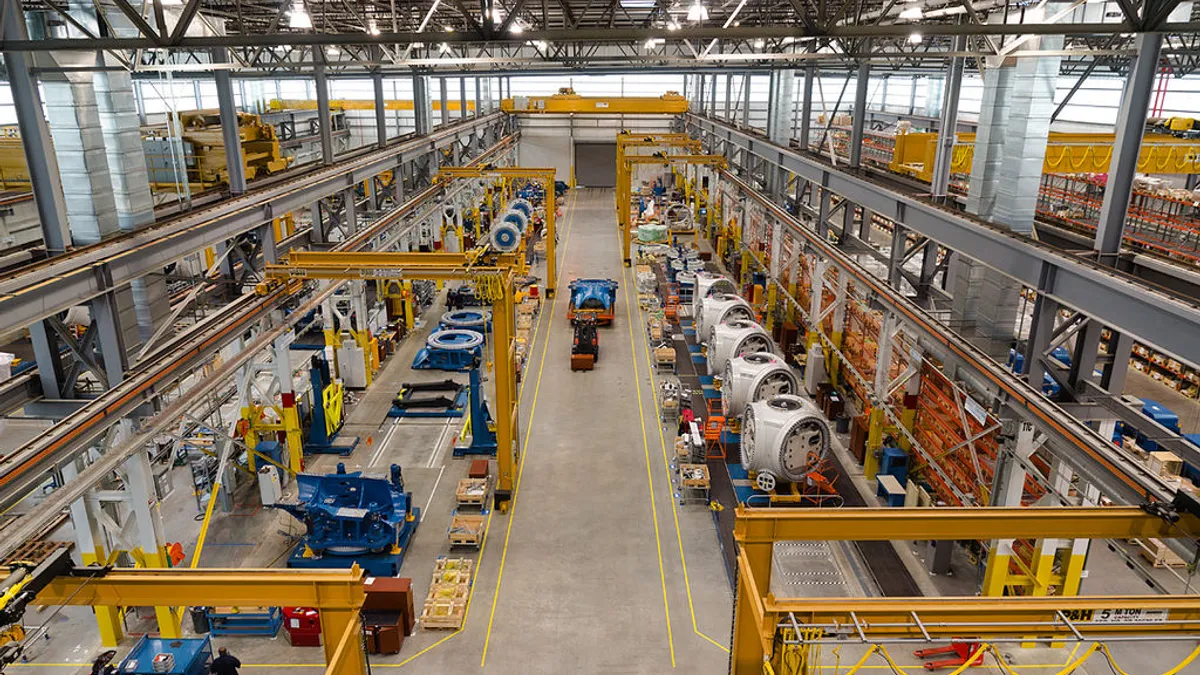In the not-too-distant future, fully-automated supply chains could move products from distribution centers through fulfillment with little or no human touch.
Devices and AI would anticipate buyer’s demand, automatically trigger orders and enable payments through smart contracts. Autonomous robots would then pick products from shelves, place them into containers and move them to driverless trucks with driverless forklifts. Drones could even carry products from trucks or distribution centers to the doorsteps of consumers.
Most of the technologies are already here, said Wolfgang Lehmacher, the World Economic Forum’s head of supply chain and transport industries. But, he said, for end-to-end automated supply chains to prosper, several conditions must still be fulfilled:
- The technologies will need to move beyond pilots and mature.
- There will need to be better data integration and collaboration between disparate systems.
- Transactions must be automated with smart contracts, to eliminate the back office human work often involved in supply chain management.
- Direct stakeholders of the supply chain, governments and citizens will need to accept the use of autonomous technologies.
"The entire ecosystem has to be ready for the technological leap and work together to make this happen," Lehmacher told Supply Chain Dive. "The big rethink as well as the broad alignment across the different parts of economic and society has not yet happened."
Warehouses are the first frontier
Many organizations are already using some form of automation in the warehouse.
E-commerce has placed tremendous pressure on the supply chain to move faster and more efficiently. As a result, distribution centers are deploying a variety of autonomous mobile robots – such as goods-to-person picking robots, self-driving forklifts and autonomous inventory robots – to increase efficiencies.
But it’s online retailers, pressured by digital demands, that are leading warehousing pilots:
- Amazon made a big leap in 2012 when it acquired Kiva Systems. It now has more than 100,000 robots working at its fulfillment centers around the globe, and recently invested in another startup to add to its robotic collection.
- Kroger announced in November 2018 it will develop up to 20 automated customer fulfillment centers in partnership with Ocado.
- And Chinese e-commerce giant JD.com took things to the next level when it opened what it declared the first "fully automated e-commerce warehouse" in Shanghai in June 2018.
Driverless vehicles tease new horizons
Autonomous vehicles are also on the verge of bringing new levels of efficiency to transportation.
PwC said in a recent study that autonomous vehicles will be able to handle 78% of transport by 2030 and produce significant cost savings by reducing personnel and eliminating idle time. The dream, at least for now, is in the pilot phases for all modes of transportation:
- Multiple automakers, from Tesla to Volvo, are piloting driverless trucks.
- China is already testing unmanned surface-level maritime ships, according to World Maritime News.
- And while drone deliveries may be farther down the line, Amazon, Walmart, UPS and DHL are all testing the concept.
Srinivasan Muthusrinivasan, vicepresident of pre-sales at JDA Software, told Supply Chain Dive he believes driverless vehicles will become a reality. While the cost of the assets will be a challenge for many, he also believes they’ll be used in transportation-as-a-service models as the need for last mile delivery grows.
Yet the ability to handle variable conditions like weather could also be a limiting factor, according to Lehmacher. He expects to see "truck platooning on rural highways relatively soon," but said autonomous vehicles in cities would require more controlled lanes and loading areas to ensure human safety. "We would require [a] governance framework to make the autonomous supply chain happen, and that has hardly started."
Uniform rules do not exist across the United States today. Legislators in Congress have drafted the AV-START act to create a loose framework for testing and deploying driverless vehicles, but until the bill is signed into law, industry stakeholders must comply with state-specific rules. At least 33 states have introduced some sort of legislation over driverless vehicles, according to the National Conference of State Legislatures.
People have a large role to play
End-to-end supply chain autonomy would also require a rethinking of the entire logistics system with close collaboration between manufacturers, operators, policymakers and citizens, Lehmacher said.
In addition, automated systems would have to learn to work with one another in real-world constraints, according to Muthusrinivasan. "Real world" things such as the unplanned arrival of a truck or a worker who needs to leave for a couple of hours, can’t always be handled by robotic process automation. Systems would need to be programmed to better re-optimize on a real-time basis. "The direction warehouses are going is to be far more agile, and I would say responsive, to both the planning side of the world and execution side of the world," Muthusrinivasan said.
In addition to handling exceptions, planning would be one of the biggest bottlenecks in creating a fully automated supply chain, Ignacio Felix, a partner at McKinsey & Company, told Supply Chain Dive in October. While machines can make recommendations, there are things they can’t always comprehend, such as the importance of relationships or gut feelings about certain supply and demand issues. A large part of supply chain planning still relies on human analysis and human judgment.
"What we’ve seen is that many of these decisions can be automated in the machine and do it without human intervention and then you have these exceptions where a person needs to intervene," Felix said.
Full automation is a possibility, but humans will still be required to oversee systems and to maintain a level of control. "In the end, [humans] wish to have a say and a look into what is working to make our lives more comfortable and ultimately also make money for us," Lehmacher said.













